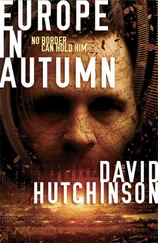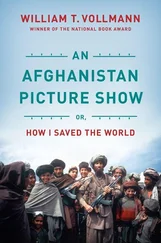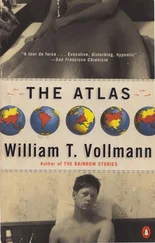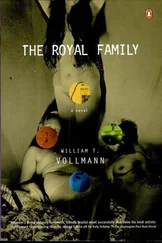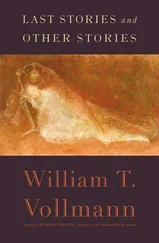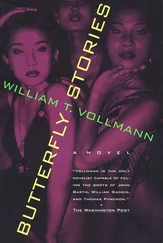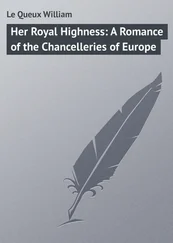479 Karmen’s aerial bombing mission—After Erzählungen über mein Schaffen , pp. 24-28, Hau-Bigelow, pp. 2-4.
480 Photographs of Soviet prisons from the outside (mentioned occasionally in “The Second Front” and “Opus 110”)—Lubarsky, pp. 14-19.
481 Käthe Kollwitz: “I believe that bisexuality is almost a necessary factor in artistic production” — Diary and Letters, p. 23 (autobiography).
483 Comrade Stalin: “Feelings are women’s concern”—Enzo Biagi, Svetlana: An Intimate Portrait, trans. Timothy Wilson (New York: Funk & Wagnalls, 1967), p. 25.
483 Karmen’s visit to Stalin’s dacha—Ibid, p. 19. According to this source, he and Simonov were present when Svetlana met her great love, the married filmmaker A. J. Kapler, who got sent away for five years for his pains.
484 “Their only reason for invading France at that late date was to deny us total victory in Germany”—An actual Communist argument. See Andeas Dorpalen, German History in Marxist Perspective: The East German Approach (Detroit, Michigan: Wayne State University Press, 1985), p. 449.
484 Red Army’s rape of German women: “an incendiary shell usually brought them out of their cellars.”—Information from Clark, p. 417.
OPERATION CITADEL
485 First epigraph—Von Manstein, p. 383.
485 Second epigraph—Billinger, pp. 140-41.
486 Von Manstein: “Grave as the loss of Sixth Army certainly is…”—Von Manstein, pp. 289-90, slightly altered.
486 Statistics on troop and mine dispositions at Kursk— Great Soviet Encyclopedia, vol. 14, p. 134 (entry on the Battle of Kursk). This engagement is generally considered to have lasted two weeks. Soviet sources, however, concatenate it with other battles, so that it runs fifty days—all the more monumental.
486 Rüdiger’s admiration for Lisca Malbran in “Young Heart”—An anachronism. This film cleared the censorship in mid-September 1944 and premiered at the end of November. The Battle of Kursk had taken place in the summer of 1943. “Young Heart” disappeared rapidly because in its second month it had earned only 372 Reichsmarks, ten percent less than the authorities required. It was an E-film (“Erste Grundhaltung latente polit. Funktion”), in other words a “serious” drama with appropriate political nudges. H-films were comic with political nudges. There were also nP-films and P-films (non-political and manifestly political). After Stalingrad, E-films were preferred over H-films, “on account of the seriousness and greatness of our times”. Unlike many films, especially P-films, “Young Heart” received no subsidy. Information from Dr. Gerd Albrecht, Nationalsozialistiche Filmpolitik: Eine soziologische Untersuchung über die Spielfilme des Drittes Reiches (Stuttgart: Ferdinand Enke Verlag, 1969), summarized for WTV by the delicious Yolande Korb. “Young Heart” must have been dreadful.
487 Various details relative to the weaponry of the two sides at Kursk, especially regarding the numbers and capabilities of Tiger tanks—David M. Glantz and Jonathan M. House, The Battle of Kursk (Lawrence: University Press of Kansas, 1999).
487 Some of my visual descriptions of German troops in this operation are based on photographs in the Ullstein archive.
488 Dancwart’s favorite proverb: “Keep riding until daybreak”— Nibelungenlied, p. 202 (“We cannot bivouc,” answered bold Dancwart. “You must all keep riding until daybreak.”)
489 The size of the salient: half the size of England—Erickson, The Road to Berlin, p. 64.
489 Ninth Panzer Division’s experiences at Kursk—Based in part on Haupt, 173-74 (battle diary of Ninth Panzer, Panzer-Grenadier Grosssdeutschland, 6 June 1943, Citadel/ Orel).
490 Ninth Panzer Division’s armor strength at Kursk—Glantz and House, p. 349.
490 Twenty-first Panzer Brigade’s armor strength at Kursk—Ibid., p. 284.
490 “Well, from the very beginning we’d known that it was no use; it was up to us as frontline soldiers simply to obey orders and bear the responsibility”—After Hans von Luck, Panzer Commander: The Memoirs of Colonel Hans von Luck (New York: Random House / Dell, 1989 repr. of undated Praeger ed.), p. 238 (original reads, in another context: “It sounded to us rather too pathetic, but what was the use? We knew that from now on it was up to us, as frontline soldiers, to bear the responsibility and make the decisions”).
490 Emblems of Panzer divisions, 1941-42—Haupt, p, 178. When I write that “we disguised the X of our divisional emblem with a V overhung by a horizontal bar,” I am actually describing the disguise of Fifth Panzer.
490 Number of Tiger tanks assigned to Ninth Army at Kursk—Nik Cornish, Images of Kursk: History’s Greatest Tank Battle, July 1943 (London: Brown Partworks Ltd. / Brassey’s, Inc., 2002), p. 135.
493 Sergeant Gunther: “Slavs drink from the skulls of their enemies”—Loosely based on Tsvetaeva, p. 114 (“Bus,” 1934-35: “Inside me, warmth and birdsong./You could drink both of them from/the two halves of my skull/[Slavs did that with enemies]”).
493 Volker: “There’s nothing we can do…”— Nibelungenlied, p. 215 (“‘The things we have been told of will happen irremediably,’ said bold Volker the Fiddler. ‘Let us ride to court and see what can happen to us fearless men in Hungary.’”)
493 “Beware of being too wise, it’s said”—Very loosely after the Poetic Edda, p. 22 (stanza 54, “Hávamál”).
496 “Maybe they expected me to scratch runes on the back of my hand”—“Operation Citadel” has a number of references to the Poetic Edda, of which this is a representative example. Brynhild (here known as Sigrdrífa) advises Siegfried, who has just awoken her from her magic sleep, to make his way through life with the help of runes. “On thy beer horn scratch it [the ale rune], and the back of thy hand, and the Need rune on thy nails” (p. 235, “The Lay of Sigrdrífa,” stanza 8, interpolated with fn.).
499 “Doom never dies, said the old man”— Poetic Edda, p. 25 (“Hávamál,” stanza 25, very loosely “retranslated” by WTV).
500 Hitler on Russian tank production figures: “The Russians are dead.”—Fest, p. 94.
501 Narrator: “Well, to be sure, they have good reason… what they had will never come back”—After the Nibelungenlied, p. 215 (“She has good reason for her long mourning,” answered Hagen, “but he was killed many years past. She ought to love the King of the Huns now, for Siegfried will never come back—he was buried long ago”).
503 Von Manstein: “A clear focal point of effort at the decisive spot” —Von Manstein, p. 547 (italics in original, excepting the “a”).
504 Significance of the Reds’ thrust against Twenty-third Panzer Corps—Described in Glantz and House, p. 161.
507 “First, get the command tank”—Information from Cornish, p. 186.
507 Stalin’s daughter, Svetlana: “I see you shining, my beloved, chaotic, all-knowing, heartless Russia”—Svetlana Alliluyeva, Twenty Letters to a Friend, trans. Priscilla John-son McMillan (New York: Avon Books [Discus], 1967), p. 132 (letter 11).
510 Von Manstein: “And so the final German offensive in the East ended in fiasco…” —Op. cit., p. 449, “retranslated” by WTV. The translator notes (p. 549) that the chapter on Operation Citadel, from which I’ve drawn this quotation, is actually an article by von Manstein for the U.S. Marine Corps Gazette, which in this English edition has been substituted for the original text’s much longer chapter on Citadel, “in order to shorten these memoirs to a size suitable for publication in Britain and the U.S.A.”
Читать дальше

